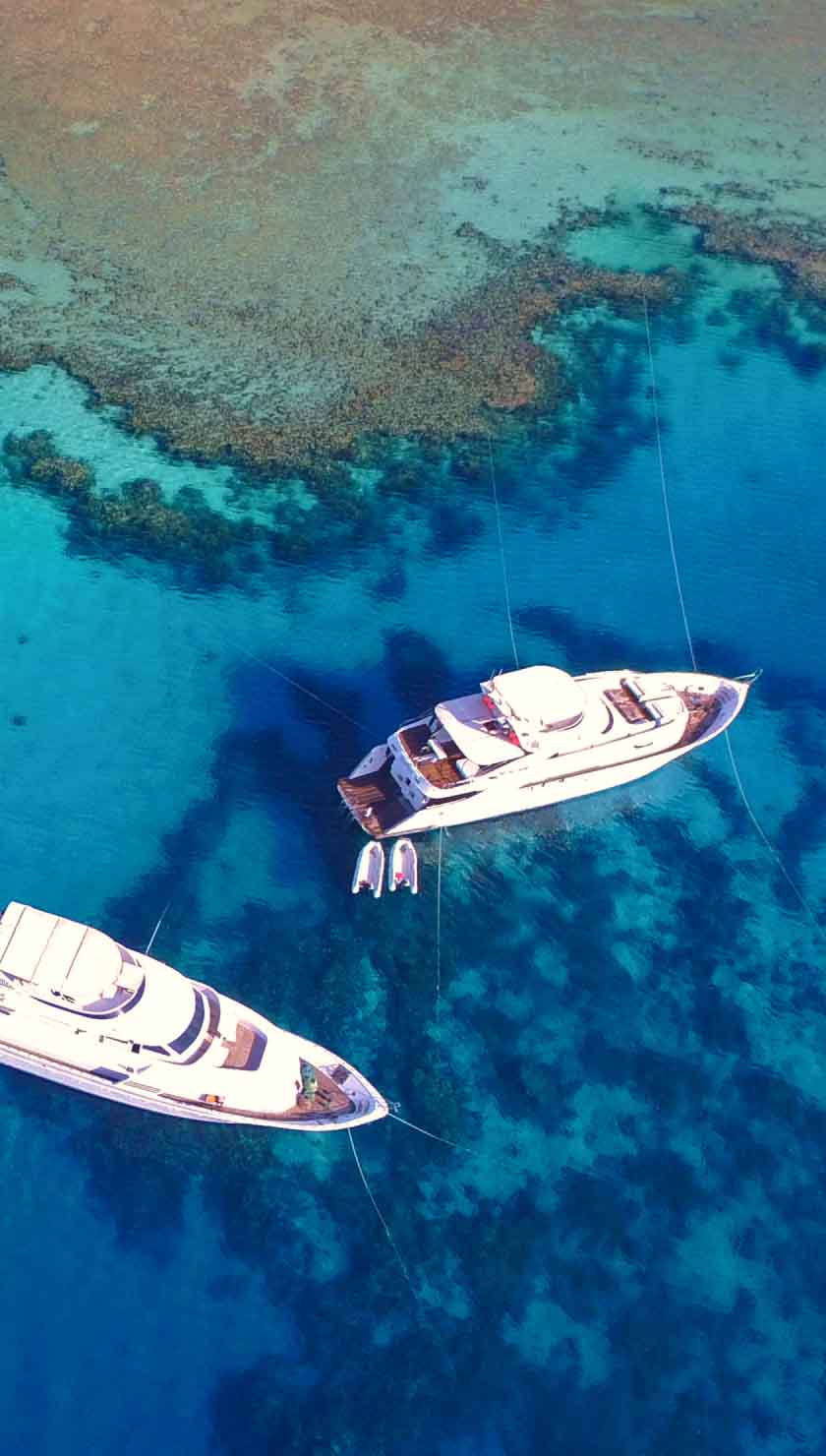Liveaboard Diving in Jackson Reef
What To Expect On A Jackson Reef Liveaboard
Liveaboards to Jackson Reef will normally be visiting here as part of a Straits Of Tiran itinerary in the Northern Red Sea, Egypt.
The dive site was made famous by the Cypriot merchant freighter, Lara, which ran aground on the reef's northern edge in 1981, Jackson Reef is a spectacular dive site located in the Straits of Tiran (the narrow channel of the sea that separates the Gulf of Aqaba from the Red Sea). Jackson Reef is the northernmost reef and is accompanied by three other world-class diving sites also visited by liveaboards, Woodhouse Reef, Thomas Reef, and Gordon Reef. These sites were all part of a vast, single ridge that has slowly been eroded away to leave mountainous peaks which lay just beneath the surface. These peaks, which were the cause of Lara's demise, are what remains of the ridge, while the underwater saddles (low points between mountains) that join these peaks have created the exquisite reefs we now dive.
To the south of Jackson Reef is where you will find a permanent mooring for liveaboards diving this area. This is ideal as the location is sheltered from both the wind and waves, making for tranquil descents. From here, divers can take different routes either to the east or west, following the steep walls of the submerged mountain. Both routes will be with the current, which usually flows from the south and heads north to the Gulf of Aqaba. Visibility is normally 65 feet (20 m) but can be in excess of 100 feet (30 m). The average depth is 65 feet (20 m), while the maximum depth is 130 feet (40 m).
Note that if heading east, dives tend to be turned just before the easternmost point of Jackson Reef, where the current is strongest. More experienced divers with good air consumption may be able to pass the point, into steadier water, to dive the northern edge of the reef.
What you can see
Your liveaboard guide will start the dive and initially, you will be confronted by the remains of the Cypriot ship, Lara, whose hull has been salvaged for scrap. Although not suitable for diving, it is a sight to behold. Just in front of the ship, to the north, is the observation area for scalloped hammerhead sharks that make an appearance in large numbers during the summer months from June until the end of September. Whalesharks have been known to make an appearance here as well.
Following the descent, if heading west, you will be diving upon the slightly shallower faced slopes of the saddle. At the base of your descent, you will be warmly greeted by inquisitive garden eels, ushering you on to the densely populated coral reefs.
Diving to the east begins on a shallow plateau at, 50 feet (15 m) at its deepest. Beyond the plateau are the steep walls of the mountain which disappear down to the abyss. Dives are usually conducted on this edge, capturing the awe-inspiring views while avoiding the brunt of the currents.
It is thanks to the nutrient-carrying capabilities of the currents that species diversity here is so high. Enormous, waving soft corals like the gorgonian fans are scattered in amongst impressive sea whips, electric red anemones and black corals. The spaces in between are filled with hard coral structures such as bright orange fire corals that fade white towards their tips. The highly decorated reef attracts many shoal species, such as cornetfish, red tooth triggerfish and black snappers, which use the coral for protection. In turn, larger species, including some pelagic species, are drawn to the area looking for an easy meal. Barracuda, oceanic whitetip and grey reef sharks are frequent visitors, and even tiger sharks like to make an occasional appearance.
Getting there
Egyptian liveaboard cruises provide a more leisurely voyage to the Straits of Tiran. Boats typically leave from the seaports at Sharm el-Sheikh or Hurghada, and both ports have international airports in very close vicinity, Sharm el Sheikh International Airport and Hurghada International Airport.











